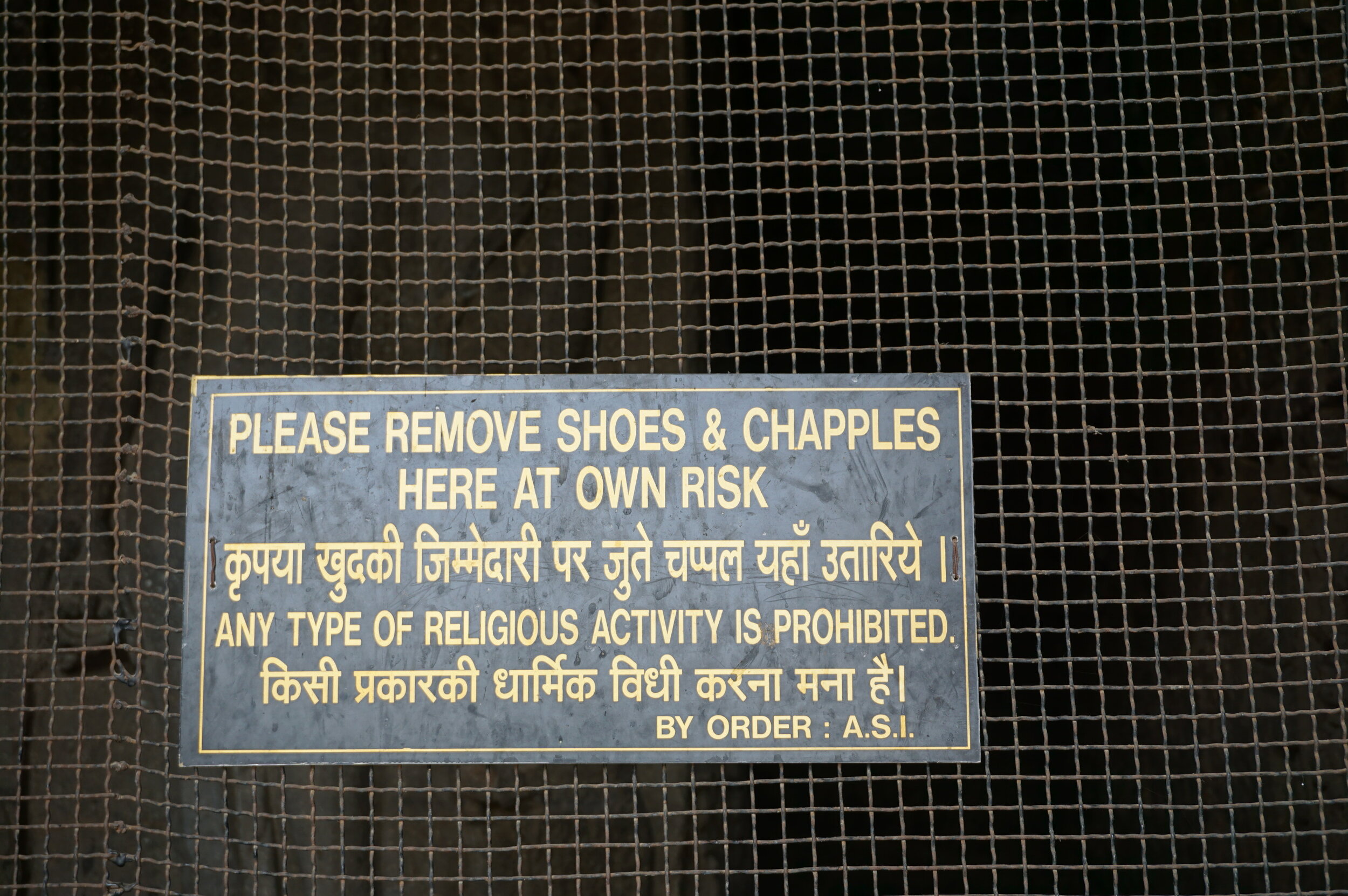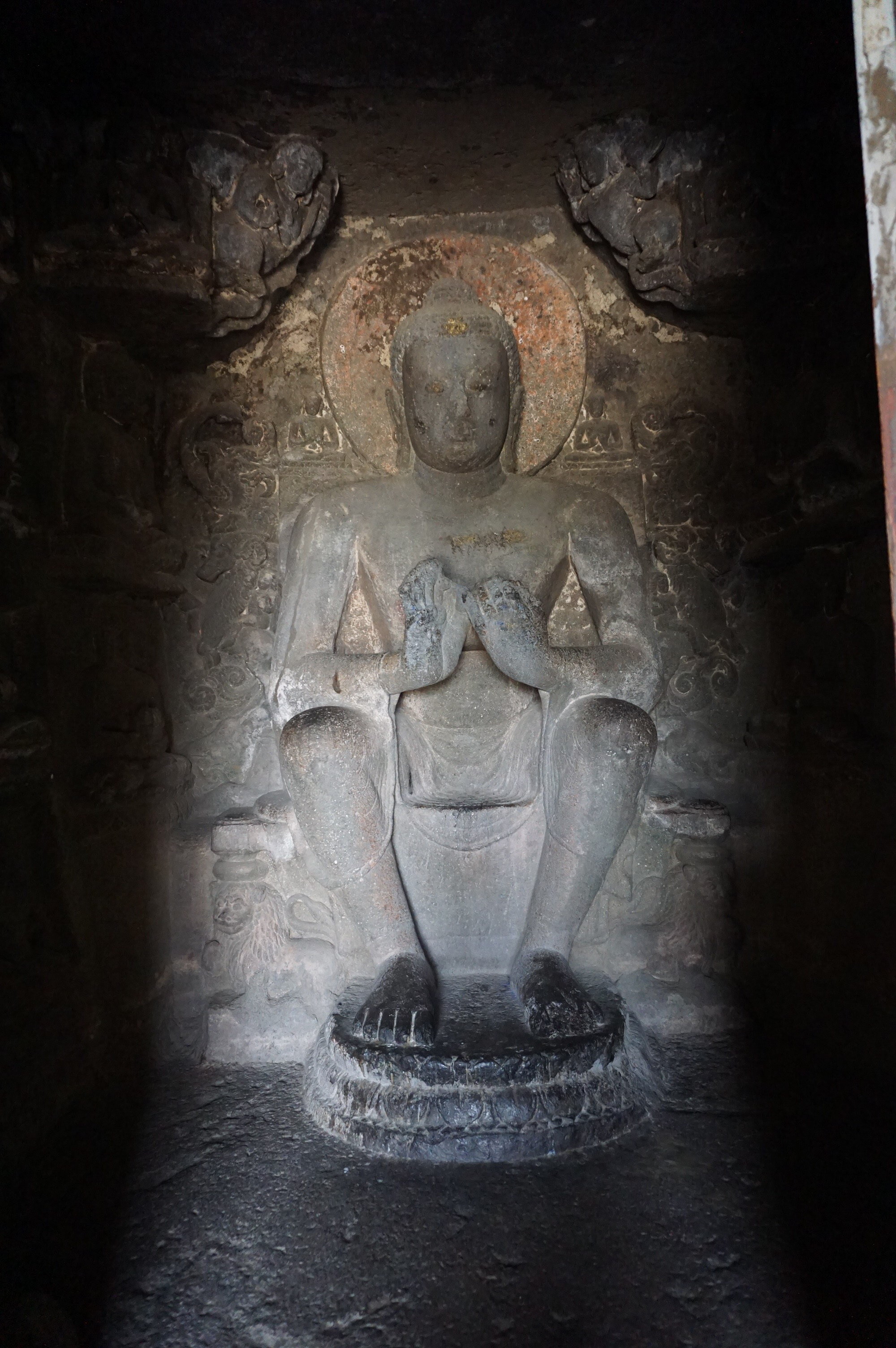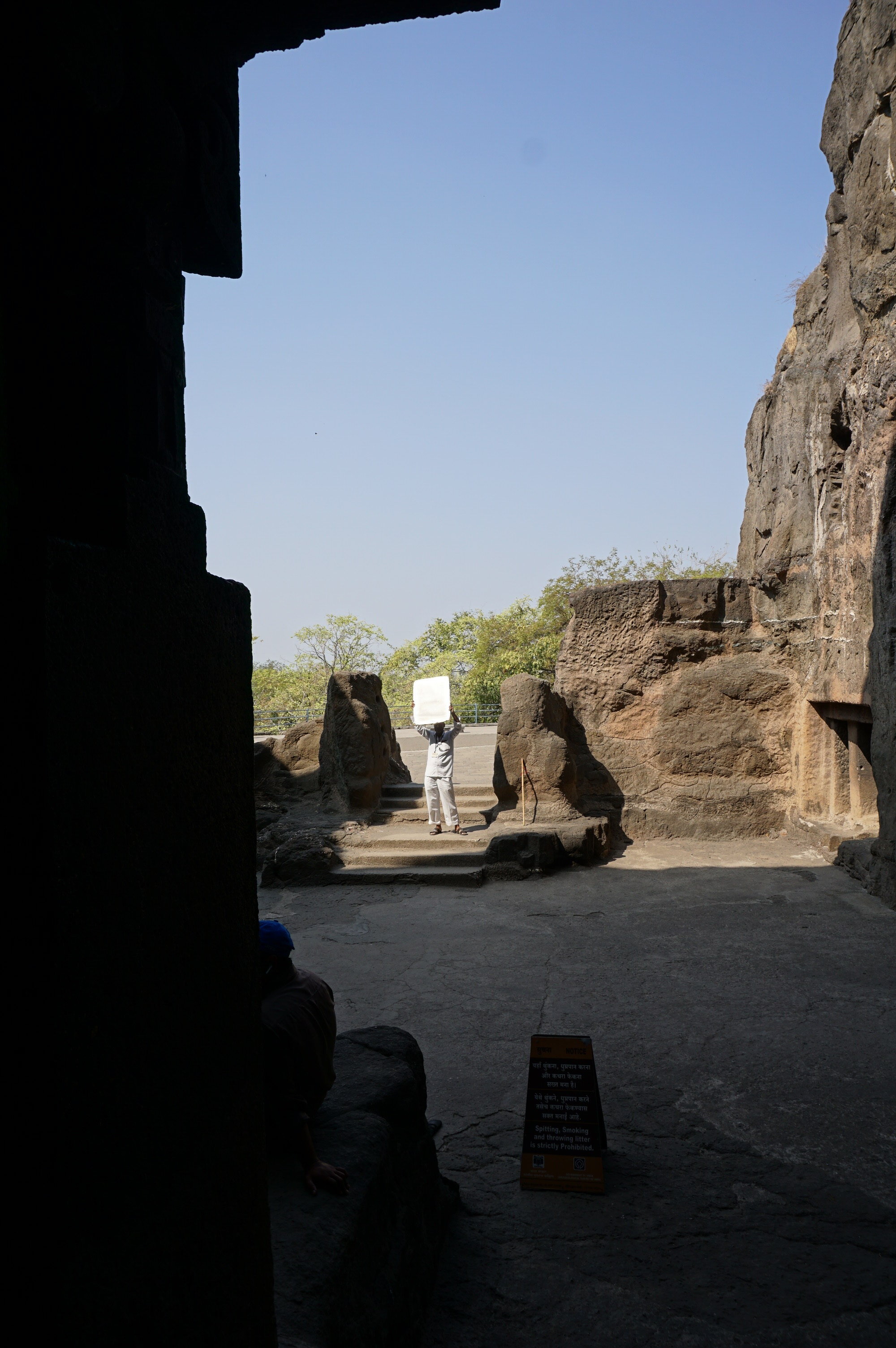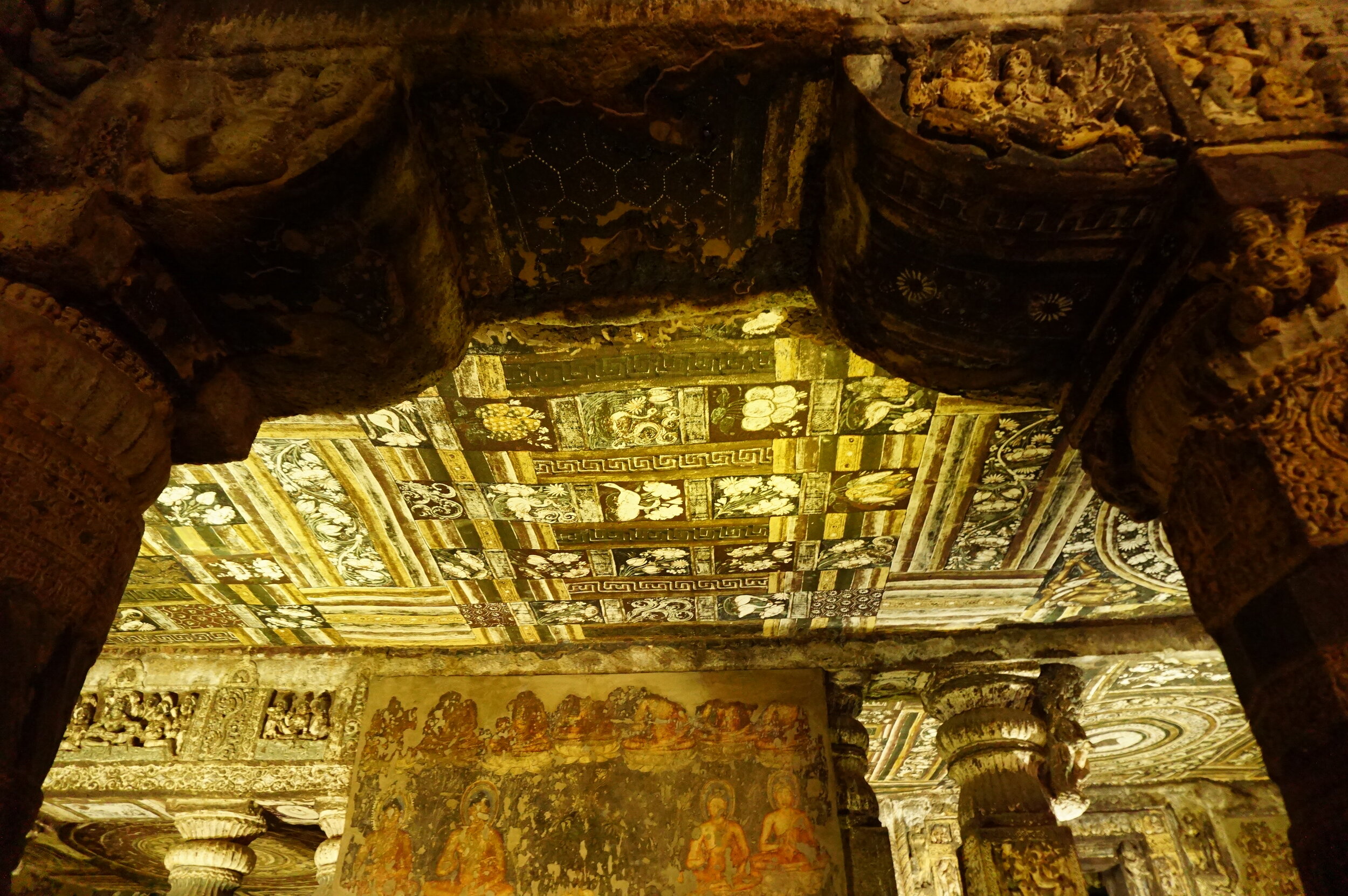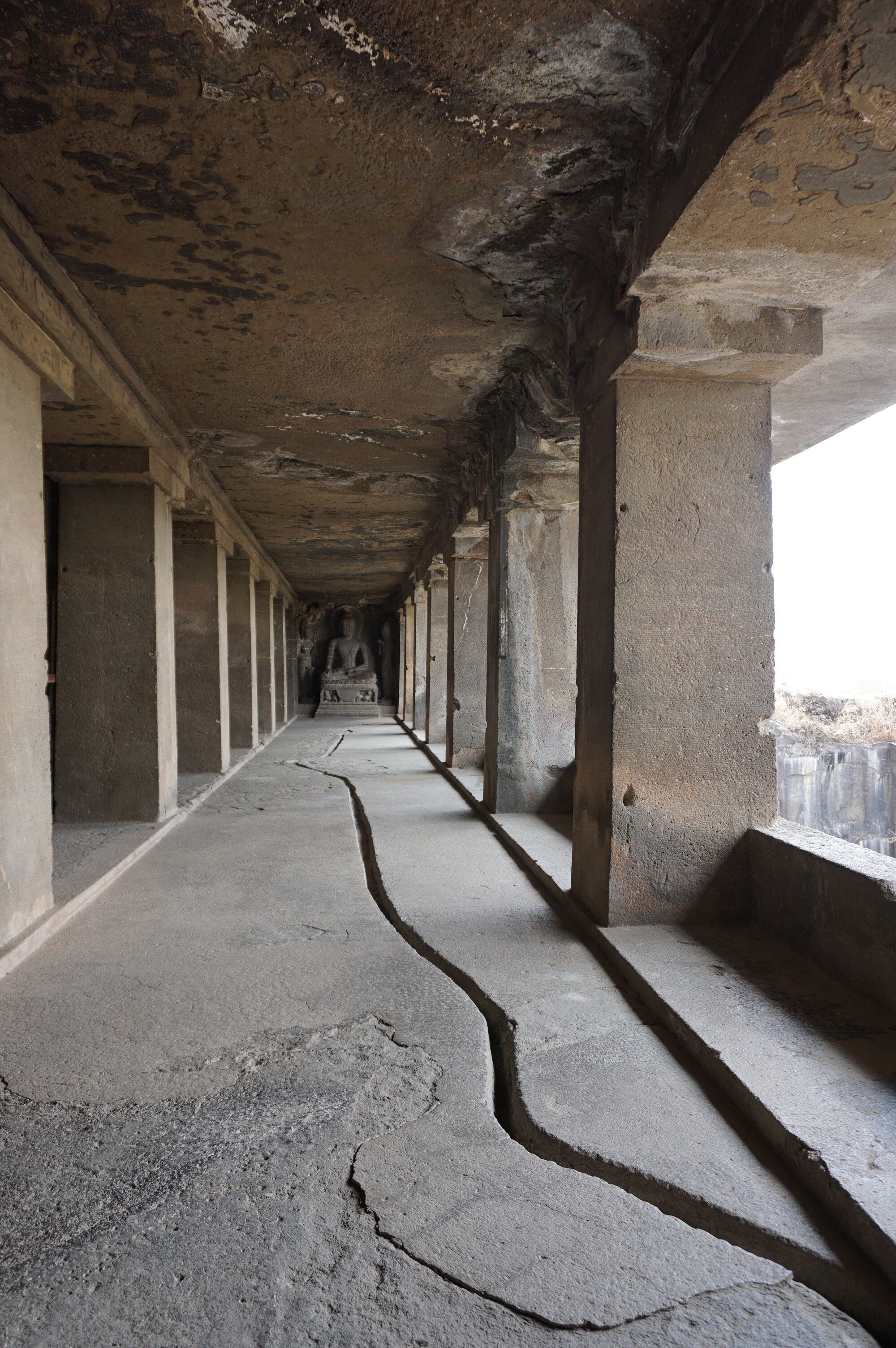Color, Graffiti and the Senses: Visitors and Worshippers at Indian Archaeological Sites
Abstract: This essay examines the ways in which visitors to a currently protected historical (and erstwhile religious) site in India create their experience through choices related to color, texture, light and sound. At the same time, it is through control of these very media that the site(s) are sought to be protected by government authorities in charge of administering the site. I suggest that modern heritage management practices need to understand and engage with these local experiences to build more inclusive sites that recognize the diversity of stakeholders, experiences and voices, as has been noted in the case of Indian museums (Appadurai and Breckenridge 2015).
Citation: Suvrathan, Uthara. “Color, graffiti and the senses: Visitors and worshippers at Indian archaeological sites.” The Jugaad Project, 2 Dec. 2020, thejugaadproject.pub/color-graffiti-and-the-senses [date of access]
In March 2020 I visited Aurangabad, a popular tourist hub located in the state of Maharashtra. The city is an ancient one and was a capital city of several successive dynasties: from the Satavahanas in the late centuries BCE/ early centuries CE, through the Yadavas between the 9th - 13th centuries, to the Delhi Sultanate (14th c.), the Ahmadnagar Sultanate (15th c) and the Mughals (17th c.). With such a long and complex history, the city and its environs are dotted with places of historical importance. Among the most important, and the ones I focus on in this essay, are the UNESCO heritage sites of Ajanta and Ellora that contain richly carved and painted Buddhist, Jain and Hindu cave temples and rock-cut temples, the Aurangabad Caves and the Islamic mausoleum built by the Mughal Emperor Aurungzeb in memory of his first wife. These sites are currently maintained by the ASI (Archaeological Survey of India), whose protective, boundary-establishing practices will also form part of this essay.
Built in the 1660’s and located within the city of Aurangabad is the tomb built by Aurungzeb – Bibi ka Maqbara (literally, Tomb of the Lady). It is also known as the ‘Taj of the Deccan’ due to its remarkable similarity to the Taj Mahal, although it was built on a smaller scale and using a combination of imported marble from north India and local basalt covered by decorated white stucco to replicate the more expensive stone. Just outside the city are the Aurangabad caves, a set of 12 Buddhist rock-cut caves constructed in the 6th and 7th centuries. Overshadowing this smaller set of caves are Ajanta and Ellora, extensive religious complexes that were dramatically cut into the basalt rock of the region. The sites are located at a distance from Aurangabad (104 and 29 kms), and constructed between the 2nd c. CE – 5th c. CE and the 7th and 11th c. CE respectively. The twenty Buddhist caves of Ajanta are well-known for their surviving paintings depicting a variety of Buddhist stories. The larger complex of Ellora has more than one hundred caves belonging to the Buddhist, Hindu and Jaina traditions, and is famous for the Kalasha temple, the largest monolithic rock structure in the world.
As historical locations they are studied, classified and reified as unchanging examples representing an ancient ideal of sculpture, architecture and painting. Sign-boards outside each of the caves describe in academic detail the dates of construction and the artistic, art-historical or religious highlights that are assumed to be of educational interest to the visitor. But in this endeavor, both administrators and educationists tend to forget that these sites are complex, multi-vocal landscapes where materiality is interpreted and experienced in a variety of ways, even today (Bhatti 2012). As Mohan (2020) notes, ‘Color is part of a religious repertoire of tools and techniques through the material culture of worship spaces…’. I would extend this to argue that texture, sound and light too play a role in this former religious landscape. In this photo essay, I explore the ways in which visitors interact with the materiality of the past in numerous ways, some of which involve rituals, even though each of the three sites discussed are no longer active religious locations.
The first thing you see as you enter the gates enclosing these locations are crowds of vendors (currently slightly thinned due to Covid) offering their services as guides or a range of items for sale including guidebooks describing the history and context of the sites and replicas of sculptures or paintings. Following this, at most locations are detailed official information boards placed by the ASI that provide a rather academic description of the history and the art-historical merit of what we are about to see (Fig. 1).
Figure 1: ASI signage outside Cave 7, Aurangabad. Photo by author.
Many caves also contain strict official signs identifying both prohibited and required practice for visitors. In this sign at the Aurangabad caves, ‘by order’ of the ASI religious activity within the caves is forbidden, although footwear is to be removed (Fig. 2). The latter is a practice that is compulsory at all active religious institutions in India but in this case it is probably to maintain cleanliness within these protected historical sites. Nevertheless, this is part of a corpus of bodily techniques by which spaces are demarcated in terms of their hierarchical and ritual importance, and it is worth noticing such boundary-defining practices.
Figure 2: Sign requiring the removal of footwear at the Aurangabad caves. Photo by author.
Even as worship is officially prohibited, Buddhist monks and pilgrims can be seen – their bright ochre and red-brown robes standing out against the harsh landscape of dessicated, pre-monsoon Ellora (Fig. 3).
Figure 3: Buddhist monks at Ellora. Photo by author.
Figure 4: Larger than life-size Buddha statue in Aurangabad (Cave 7). Photo by author.
At cave no. 7, described as containing the “best specimens” of sculptures at Aurangabad, is a larger than life-size sculpture of the Buddha seated on a lion throne with his hands in preaching mudra (hand gesture) (Fig. 4). While the original paint on the figure has long since worn away except for traces of red pigment on the halo, there is clear evidence of contemporary worship. There are traces of gold leaf on the chest and forehead, while the hands bear traces of a deep blue pigment as well as the gold leaf (Figs. 5, 6, 7). The gold leaf is most probably from sheets of gold leaf or vark that are easily available in Indian markets, and used for a variety of gilding activities, including on food.
Figure 5: Traces of blue pigment and gold leaf on the sculpture. Photo by author.
Figure 6: Closeup of gold leaf. Photo by author.
Figure 7: Gold leaf on the face of the Buddha sculpture. Photo by author.
Traces of gold foil are found in a couple of other locations within this complex of caves, as in Cave 3 (Aurangabad) below (Fig. 8).
Figure 8: Gold leaf in Cave 3, Aurangabad. Photo by author.
The contradiction between practice and prescription is seen at other protected monuments in the area. At Bibi ka Maqbara, a Muslim tomb commissioned in the 17th c. by the Emperor Aurungzeb in memory of his first wife, we find a similar official proscription of religious activity outside the structure (Fig. 9).
Figure 9: ASI signage outside Bibi ka Maqbara. Photo by author.
However, there is an overflowing of sentiment and offering, if not worship, inside. The subterranean tomb of the queen is covered in coins and paper currency (Figs. 10, 11).
Figure 10: Offerings of money and flowers on the tomb. Photo by author.
Figure 11: Closeup of the tomb at Bibi ka Maqbara. Photo by author.
Worship at Ajanta and Ellora does not only involve touch as seen in the presence of gold foil on the sculptures. Sound too plays a role. Tourist guides point out caves where humming creates a resounding echo that is heard throughout the interiors as they talk about the intricacies of historical worship. Simultaneously, one can hear the shrill whistle of guards prohibiting visitors from engaging in overly loud conversations. And inside Cave 10 at Ellora, a Buddhist monk in saffron robes and his followers sat softly praying within a Buddhist chaitya (an apsidal space with a stupa or hemispherical sepulchral monument within), despite the official sign prohibiting worship (Fig. 12).
Figure 12: Buddhist monk and followers praying in Cave 10, Ellora. Photo by author.
Interesting choices are also made regarding illumination at these locations. To conserve the paintings, several of the caves at Ajanta are protected from the sunlight by canework shades. In some of the larger caves at Ellora that contain well-known scenes, dim lighting is installed and there are guides who are allowed to use powerful electric torches to illuminate specific paintings/scenes. Visitors are not encouraged to linger, in part due to the crowd of people waiting their turn to enter, and are also not supposed to use their own electric torches/cellphones to illuminate scenes. This selective ‘revealing’ of the highlights is another way in which the official custodians of these sites seek to direct and control experience. And yet, at the same time, visitors seek to create their own experiences as we have seen with the Buddhist worshippers in Cave 10, and aided to some degree by guides in other cases.
Cave 10 at Ellora is illuminated by an ancient technique – that of shining natural sunlight into the dark interiors by reflecting it off a metallic sheet. The sheets seem to be used by official guides and caretakers of the site. This is a technique familiar to many archaeologists of the 18th and 19th century as they investigated ancient, cramped interiors without electricity or powerful torches, and in conditions where using fire might have been dangerous (Figs. 13, 14).
Figure 13: Reflective illumination, Cave 10, Ellora. Photo by author.
Figure 14: Reflective illumination, Cave 10, Ellora. Photo by author.
This complexity of interaction with the sites and the attempts to control and shape the ‘correct’ way of tourist interaction leads us to think about the history of human interaction with the site, particularly when the locations were sites of active worship. What of the stories and lived experience within which the material structures were embedded? We need to recognize that the people who created and used these sites probably experienced the materiality of the sites differently.
We can speculate that the sounds, sights and textures of active worship would have permeated the caves. For instance, smoke stains on the walls indicate the presence of open flame torches at one time. The now faded natural colors would have been brighter, with a greater immediacy of color and pigment. Even today, traces of natural ores used in the paintings can be identified embedded in the walls of the cave. We see hematite (reddish, Cave 21, Ellora), chalk (white) and an unidentified blue pigment (Fig. 15).
Figure 15: Traces of natural pigment in the walls. Photo by author.
Apart from worship, we get hints of the dross of daily life. There is evidence of grinding slicks likely used for food as well as rows of uniform shallow depressions that tour guides mention might have been where pigments were mixed (Caves 15 and 10 respectively at Ajanta; Figs. 16, 17).
Figure 16: Grinding areas, Cave 15, Ajanta. Photo by author.
Figure 17: Depressions possibly used for the mixing of pigment, Cave 10, Ajanta. Photo by author.
Texture and movement would have been invoked both through the paintings and through the addition of curtains/shade in some perishable material (cloth, matting). For instance, in Cave 2 at Ellora the ceiling is painted like a patterned carpet and the uneven texture of the stone surface is used to create the illusion of movement (Fig. 18).
Figure 18: The carpet-like ceiling of Cave 2, Ellora. Photo by author.
Texture is introduced through painting techniques where pigment is applied in relief, as in a well-known example of a woman’s pearl jewelry where the clever use of texture makes it seems that the necklace can be lifted off the wall (Fig. 19).
Figure 19: Textured jewelry, Cave 21, Ajanta. Photo by author.
Other caves, as in Cave 12 (Ellora) hint at the use of scaffolding or holes to tie curtains or banners (Fig. 20).
Figure 20: Architectural elements for possible scaffolding, Cave 12, Elora. Photo by author.
Finally, it is clear that the caves were built by people who shared our appreciation of the landscape. While we went in the dry season, the peak tourist season is during the monsoons when the lush landscape is animated by seasonal waterfalls. The builders made clever use of strategically placed drainage channels that were placed not just for utility but also effect (Cave 12 below; Fig. 21) and storage reservoirs and architectural techniques to direct seasonal waterfalls such that they created a dramatic waterscape, often creating a veil over cave entrances or paths.
Figure 21: Drainage channels, Cave 12, Ellora. Photo by author.
Starting in 10th c. and probably by the 13th c., the caves of Ajanta and Ellora were largely abandoned as were the caves of Aurangabad. Aurangabad, due to its proximity to the city, and Ellora, due to its proximity to an active trade route, were known of and sporadically visited in subsequent centuries. In fact, Mughal emperors and nobles picnicked at Ellora in all seasons. but especially during the monsoons. Ajanta, however, was not only abandoned but forgotten till the early 19th century when a British Army officer on a hunting trip stumbled upon the overgrown entrance to the caves. John Smith, this first modern traveler in an ancient landscape, memorialized the event by incising his name onto one of the paintings. This graffiti can still be seen in Cave 10, the first cave he entered (Fig. 22).
Figure 22: John Smith’s signature, Cave 10, Ajanta. Photo by author.
This re-discovery of Ajanta spawned more than a century of historical, archaeological, art-historical and artistic scholarship. In particular, the paintings influenced both the development of modern Indian Art and the nascent field of photography (including archaeological photography) in India. For instance, John Griffiths, who was the principal of the J. J. School of Art in Bombay published a pioneering two-volume work and also ensured that hundreds of the paintings were copied (Sharma 2011: 122). On pillars outside Cave 17 we see a record of some of the School’s numerous visits to Ajanta (Fig. 23). A generation of well-known artists were inspired by the murals of Ajanta and were instrumental in the establishment of what is called the ‘Bombay Revival’ (Arrowsmith 2011).
Figure 23: Modern graffiti, Cave 17, Ajanta. Photo by author.
In the case of Ajanta and Ellora, we see how heritage-making is a complex and multi-layered process that incorporates not just a straightforward experience of the past but also the interpretation of the past in the present. These interpretations are varied and contingent on a diversity of historical and modern beliefs, practices, rituals and experiences that mediate how individuals and groups interact with the materiality of these ancient sites. One can argue that the ‘who’ questions are critical in heritage management: whose heritage, who manages it, who interprets, who consumes it? Several recent approaches to heritage management, in fact, emphasize the importance of creating locally grounded, participatory forms of heritage, management practices, ones that are rooted in the ideas, practices and concerns of specific cultures and communities (Silva and Chapagain 2013).
As an archaeologist, I want to end with a final thought about heritage and heritage-making. While archaeologists are in a unique position to engage with diverse communities and stake holders due to the intimate and contextual practice of fieldwork that often involves extended periods of time living (and surveying or excavating) within local contexts, at the same time, in the South Asian context, engagement with local communities and involvement in participatory practice is not extensive (for exceptions, see Raczek and Sugandhi 2020). But this is something we can and should do -- starting from actively engaging with the diverse experiences of materiality as discussed above. In doing so, we will not be giving up academic, quasi-objective rigor but thinking about new ways of doing histories.
In fact, I see the Covid pandemic as an opportunity for us to re-think our interactions with people. In a sense, over the last several months we have been pushed into a situation where we are hyper-aware of other bodies -- their locations, their movement, their relationship to our own bodies. Can we extend this to the ways in which we think about heritage management by incorporating the agentive role of these bodies in (re)creating ancient spaces?
References
Appadurai, A. and C. A. Breckenridge. (2015). “Museums are Good to Think: Heritage on View in India”. In Saloni Mathur and Kavita Singh, eds., No Touching, No Spitting, No Praying: The Museum in South Asia. London and New York: Routledge.
Arrowsmith, R. R. (2011). Repainting Ajanta: The Global Impact of the Frescoes and their Copies. Lecture given at Oxford University as a part of an exhibition titled “Indian Traces in Oxford.” 0:26:07. March 3, 2011. Accessed August 25th, 2020. http://podcasts.ox.ac.uk/repainting-ajanta-global-impact-frescoes-and-their-copies.
Bhatti, S. (2012). “Visiting the Museum: Curiosity About the Ajaib Ghar” in Shaila Bhatti Translating Museums: A Counterhistory of South Asian Museology, pp. 145-187. Walnut Creek: Left Coast Press.
Guha-Thakurta, T. (2015). “The Museum in the Colony: Collecting, Conserving, Classifying”. In Saloni Mathur and Kavita Singh, eds., No Touching, No Spitting, No Praying: The Museum in South Asia. London and New York: Routledge.
Mohan, U. (2020). “Religion and Ritual: The Modern Religio-colorscape.” In Anders Steinvall and Sarah Street, eds. A Cultural History of Color in the Modern Age. London: Bloomsbury.
Sharma, M. (2011). “Disquisitions on the Paintings of Ajanta”. In Parul Pandya Dhar, (Ed.), Indian Art History: Changing Perspectives, pp. 121-141. New Delhi: DK Printworld and National Museum Institute.
Silva, K. D., and Chapagain, N. K. (eds.). (2013). Asian Heritage Management: Contexts, Concerns, and Prospects. London and New York: Routledge.
Raczek, T. P., and N. S. Sugandhi. (2020). “Chai and Conversation: Crafting Field Identities and Archaeological Practice in South Asia.” Archeological Papers of the American Anthropological Association 31.1, 80-95.



